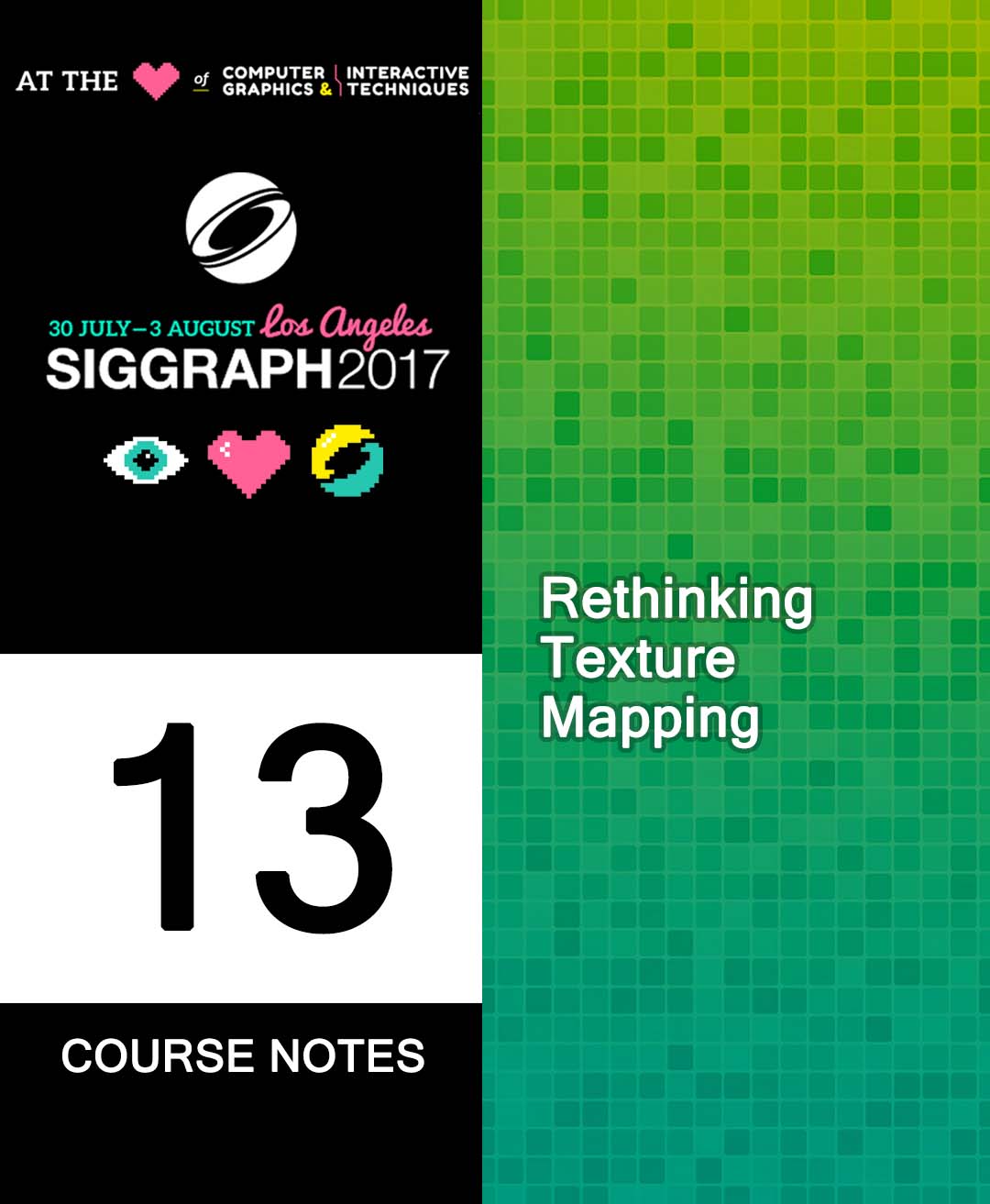“Rethinking Texture Mapping” by Yuksel and Lefebvre
Conference:
Type(s):
Entry Number: 13
Title:
- Rethinking Texture Mapping
Organizer(s):
Presenter(s)/Author(s):
Abstract:
Prerequisites
Familiarity with the traditional 3D content-creation pipelines and especially UV-mapping and texture mapping.
Level
Advanced
Who Should Attend
Technical directors and developers, from the gaming and film industries. Computer graphics researchers who specialize in real-time rendering, texture mapping, GPU, surface representations, and geometry processing (parameterization). Digital artists and content creators, particularly those with UV-mapping skills. Developers of modeling tools. Hardware specialists.
Description
Texture mapping is fundamental to much of computer graphics but has a number of fundamental issues. Creating uv-maps is time consuming and involves extensive manual effort. Distortions and seams introduced by mapping complicate texture authoring, filtering, and procedural synthesis. The final result is optimized for a specific mesh, and it does not necessarily work through LODs. Any change to the geometry implies updating uv-maps and textures. Texturing other surface representations (implicit surfaces, point clouds) requires a conversion to a mesh. As a consequence, texture mapping continues to occupy a substantial portion of artist time, which dominates the cost of world-class video game production.
Since the early days of texturing, research has focused on how to alleviate or even bypass traditional texture-mapping limitations. Unfortunately, the ubiquitous adoption of texture mapping implies that it is seldom questioned as the method of choice, and authoring pipelines and rendering engines have been shaped around its intrinsic limitations, thereby making it harder for alternatives to appear.
Recently, the industry has recognized the advantages of alternative texture-mapping methods such as the increasingly popular P-Tex method. Several advances in GPU technologies have made alternative texturing approaches computationally very efficient, and the industry has shown a renewed interest in moving beyond texture mapping. And the algorithms and data structures used by some alternative approaches extend beyond texturing, toward solid modeling, volume rendering, and simulations on surfaces.
This course summarizes alternative approaches and their advantages and tradeoffs regarding ease of authoring, storage, versatility, rendering quality, and speed.





